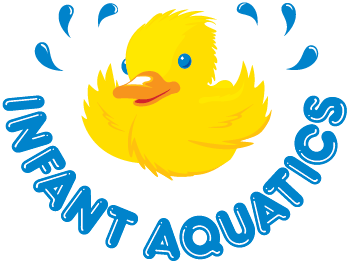The Royal Life Saving Infant Aquatics program is taught with the child dependent on the parent or carer in the water.
Parents are an integral part of their child's aquatic education by providing guidance and support through activities that develop water familiarisation, exploration and water safety skills. The program encourages progression in developing aquatic skills suitable to the child's developmental stage.
Learning Areas
There are six key learning areas, or development strands, within the Infant Aquatics program which keep the program well-rounded, challenging and rewarding.

GETTING WET
Entering the water safely using different entries appropriate for each motor development stage progressing towards encouraging safe independent entries and exits.
BREATHING
Develops confidence in getting the face wet, blowing bubbles and learning to submerge. Fun activities promote relaxation and breath control.
GOING UNDERWATER
A gradual process encouraged as each child shows readiness to participate and initiate the skill themselves. Using simple cue words, actions and songs, this will create a fun and non-threatening environment to support the learning of this skill.
STAYING AFLOAT
Focus on experiencing floating on the front and back. Learning to float is an important skill not only to progress to propulsion but is an essential survival skill for every child.
KEEPING BALANCE
Experiences of body orientation and rotation skills which are vital for developing survival and mobility skills.
BASIC KICK & ARM ACTION
Promotes kicking and paddling to develop basic propulsion skills. Initially, these skills will be rudimentary but as crawling, walking and running skills are gained on land, coordination of kicking and paddling skills will develop and become stronger.


